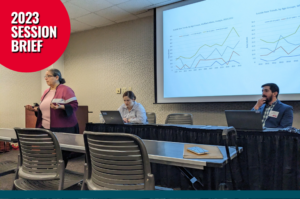By Kameron Farmer
 Epidemiologists from the Georgia Department of Public Health have established two innovative tools they believe will help reduce violent death and injuries in the state.
Epidemiologists from the Georgia Department of Public Health have established two innovative tools they believe will help reduce violent death and injuries in the state.
During the 12th Annual State of the Public Health Conference at the University of Georgia, epidemiologists Rana Bayakly, Emily Blankenship, and Adan Oviedo introduced the Georgia Violent Death Rate System (GVDRS) and Firearm Injury Surveillance Through Emergency Rooms (FASTER) system.
These systems provide evidence-based data to help create initiatives that prevent violent deaths.
Bayakly explained that the GVDRS, a population-based system, collects data on all deaths related to homicide, suicide, accidental firearm legal intervention and deaths of undetermined intent. It contains information that gives context on violent deaths, including information on mental health issues, relationship issues, or life stressors.
Next, data such as death certificates and law enforcement records is acquired by GVDRS’ data collectors. The reporting system provides researchers, elected officials and violence prevention programs with timely, accurate information on victims, suspects and relationships that are affiliated with incidents resulting in fatal injury or death.
Like the GVDRS, the FASTER system evaluates changes and similarities in injuries related to firearms. To accomplish this, the system monitors firearm injuries that are nonfatal, gleaned from Emergency Department visit records. The data it receives will go to partners, such as elected officials and violence-prevention programs. Doing so could lead to the creation of strategies targeting Georgians that are at risk of nonfatal firearm injuries.
Oviedo said one of the best things about FASTER is that it is very immediate.
“When an injury is presented at an emergency department, we can get that information in 24 to 48 hours,” Oviedo said. “All of these emergency departments are kind of trickled in, but we get almost 90 percent of it within the first two days. We get this almost near real time snapshot of what’s going on.”
The data revealed that there was an uptick in suicide rates in 2020. When asked for a possible explanation, Bayakly pointed to the high number of gun purchases and the unpredictable nature of the pandemic.
